This website uses cookies so that we can provide you with the best user experience possible. Cookie information is stored in your browser and performs functions such as recognising you when you return to our website and helping our team to understand which sections of the website you find most interesting and useful.
CMU Trends In Ten Streaming Business Library
CMU Trends In Ten: Digital Dollars
By Chris Cooke | Last Updated: March 2020
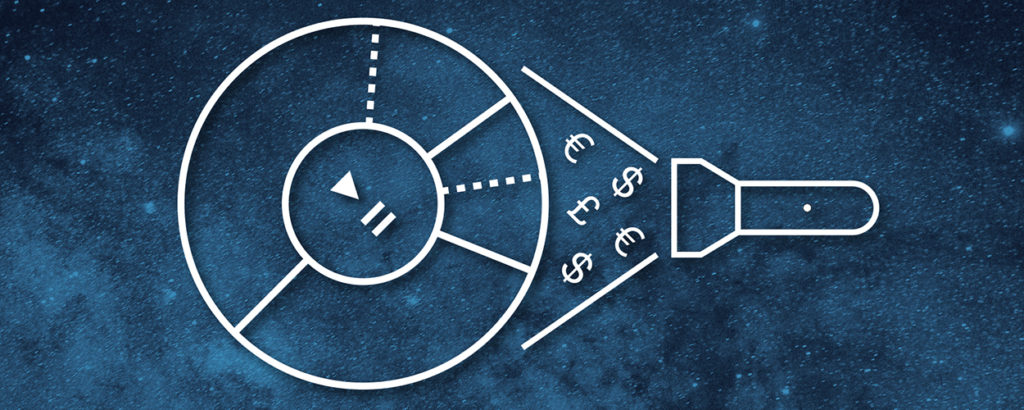
Based on the ‘Dissecting The Digital Dollar’ research CMU Insights has undertaken for the Music Managers Forum, this is a ten step guide to how streaming services are licensed by the music industry and how digital royalties are calculated each month.
You can currently access this CMU Trends guide for free. To access all the CMU Trends guides go premium with CMU – click here to become a premium subscriber for just £5 a month.
For a much more in-depth guide to how the streaming business works you should read the full ‘Digital Dollar’ book. You can also download a series of free ‘Digital Dollar’ guides covering topics like record deals, transparency, fan data and song royalties. CLICK HERE for more information.


01. There are two sets of music rights
Whenever you write a song you create a song copyright. If you then make a recording of that song, you create a separate recording copyright.
So, the music rights industry controls and represents two sets of copyright, the song rights and the recording rights.
Although many artists both write and record music – and many music rights companies have one division dealing in songs and another in recordings – the two sides of the music rights business operate pretty autonomously from each other.
So, artists appoint record companies to represent their recording rights, and music publishers to represent their song rights.
As a streaming service streams recordings of songs, it is exploiting both sets of music rights. This means it needs licences covering both.
It will therefore need to negotiate licensing deals with both the record industry and the music publishing sector.

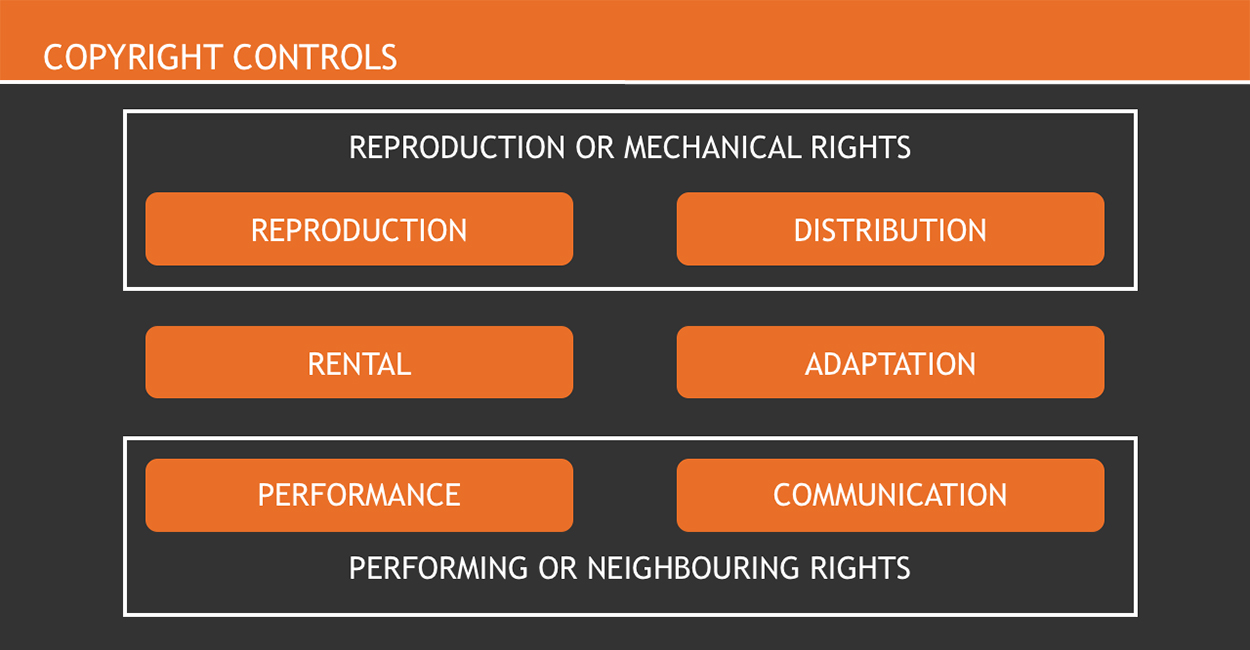
02. Copyright provides a number of ‘controls’
Copyright law provides copyright owners with certain controls over the content they own – which means they can control what happens to that content.
The exact list of controls varies from country to country, though commonly includes: the reproduction control, the distribution control, the rental control, the adaptation control, the performance control and the communication control.
In the music industry it is common to group the reproduction and distribution controls together and call them the reproduction rights or – in music publishing – the mechanical rights.
It is also common to group the performance and communication controls together and call them the performing rights or – increasingly in the record industry – the neighbouring rights.
Copyright makes money whenever a third party wants to exploit a copyright owner’s controls. If you want to reproduce, distribute, rent, adapt, perform or communicate someone else’s song or recording, you must get their permission. The copyright owner charges you for that permission, and that’s how they make money. Permission giving for money is called licensing.
When the third party is getting a licence, they will usually need to state which of the copyright controls they wish to exploit. The nature of the deal – and even who they do the deal with – may differ depending on which controls are being exploited.

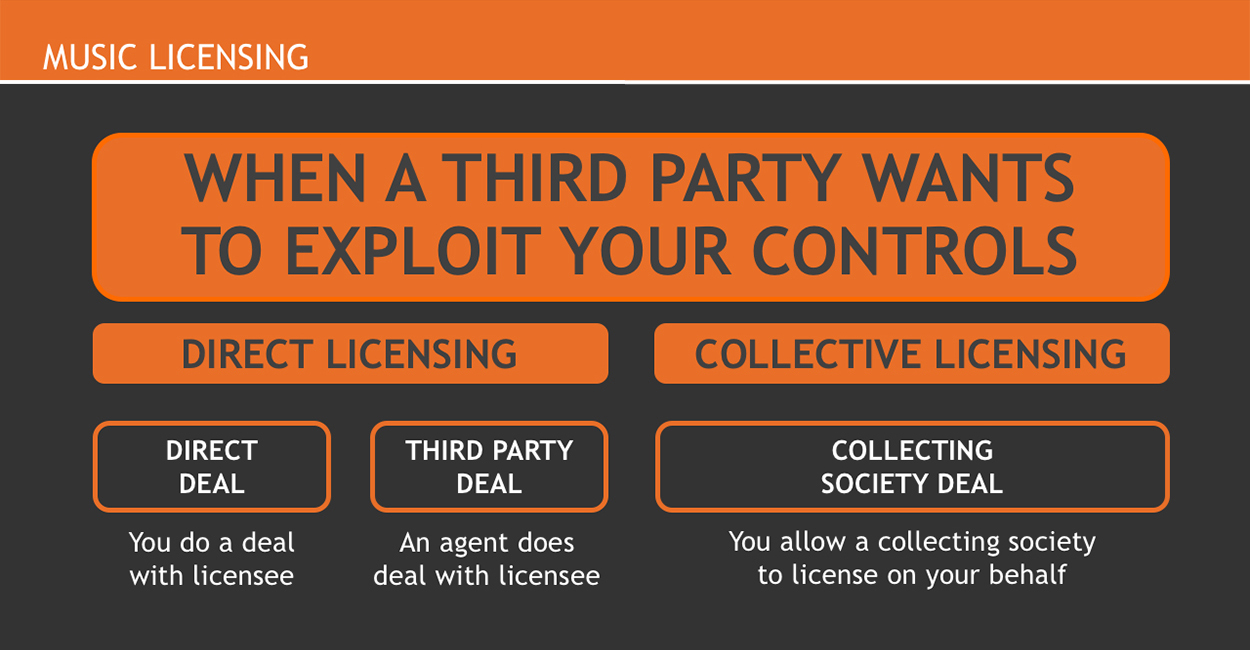
03. The music industry licenses directly and collectively
At a basic level, if someone wants to make use of a song or recording, they must identify the copyright owner or owners, get in touch with them and negotiate a bespoke deal. This is direct licensing. However, in many scenarios the music industry licenses collectively.
With collective licensing, all the rights owners put their respective copyrights into one pot and appoint a central organisation to negotiate on their behalf.
That central organisation may be called a collecting society, or a performing rights organisation (PRO) or a collective management organisation (CMO). The CMO then does the deal and collects royalties from the licensee, passing the monies on to artists, labels, publishers and songwriters based on usage.
In most countries there are separate CMOs for recording rights and song rights. And in some countries – on the songs side – there are also separate societies representing mechanical and performing rights.


04. Streaming exploits both the mechanical and performing rights
This adds to the complexity of digital licensing.
Whereas pressing a CD exploits only the mechanical rights and playing a track on the radio exploits only the performing rights, it is generally agreed a stream exploits both elements of the copyright.
This is a particularly important point in countries where – on the songs side – mechanical and performing rights have traditionally been licensed separately by different entities.


05. Record labels usually license digital services directly
This means that the streaming services need to do direct deals with the record companies, rather than dealing with a collecting society.
This usually means doing a deal with the three majors – Universal, Sony and Warner – and then with an organisation called Merlin, which negotiates a template deal on behalf of about half of the world’s indie labels.
The streaming service would then usually get access to the music of the other indies and DIY artists via aggregators and distributors.

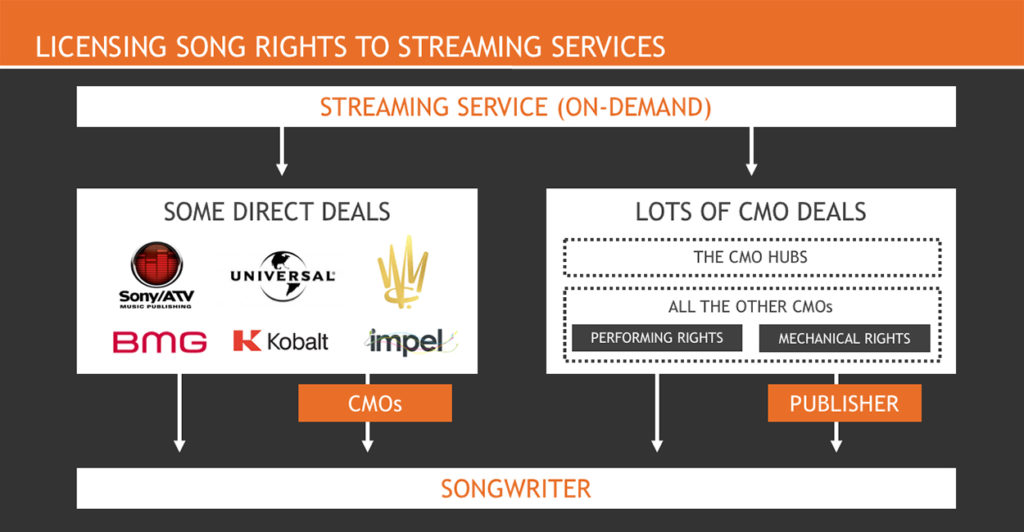
06. Publishers sometimes license digital directly and sometimes license it collectively
Songwriters and publishers predominantly license streaming services via their CMOs, but with a big exception.
An increasing number of publishers, including the big five – Universal, Sony/ATV, Warner/Chappell, BMG and Kobalt – license their Anglo-American catalogues through direct deals, albeit via joint ventures with the CMOs.
So, as a streaming service, you need to do your direct deals first, and then negotiate additional deals with all the CMOs, including – in some countries – one society for mechanical rights and another for performing rights.
That said, some of the CMOs have started to form ‘hubs’ so that you can get deals with multiple societies via one set of licensing negotiations.


07. Streaming deals are ultimately revenue share
Every label, distributor, publisher and collecting society does its own deal with every streaming service, and the terms of all those deals are different and often secret.
However, in the main, labels and distributors will generally negotiate a revenue share from each streaming service of between 50% and 60%, while publishers and the song right CMOs will be on a revenue share of between 10% and 15%.

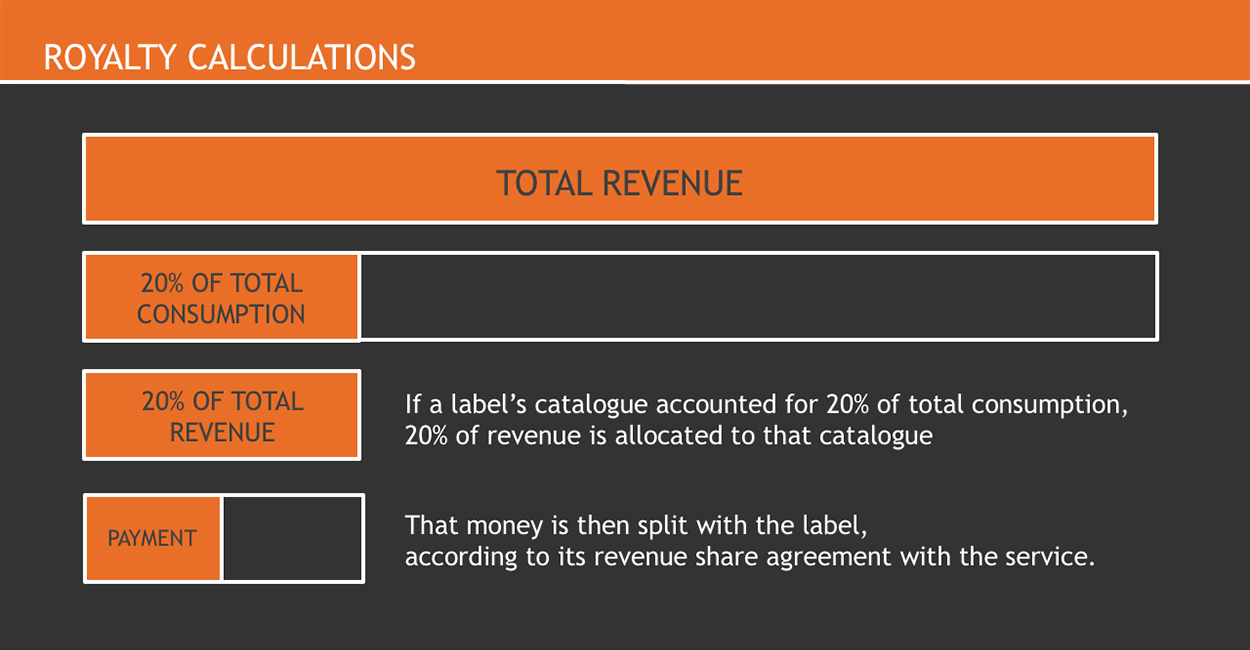
08. But it is revenue share based on consumption share
That means that every month a service like Spotify works out what percentage of overall streams came from any one licensor.
Let’s say one label’s catalogue accounted for 10% of all streams. Spotify would then allocate 10% of its overall revenues to that label. It would then share that sum of money with the label based on its revenue share agreement. So, if the label was on a 50% revenue share deal, the service would pay half of the money allocated to the label’s catalogue to the label.
The service then repeats this process with every label, distributor, publisher and CMO – hoping that there will be about 30% of its overall revenues left on the table at the end of the process.


09. There are other elements to the deal
Although at their core the streaming deals are revenue share arrangements, there will be other parts of the deal too.
With a new service, the label might ask for equity in the business and upfront fees to set everything up. Labels and distributors will also often ask for an advance – a lump sum of money up front.
But perhaps most important are the minimum guarantees. A label, distributor, publisher or CMO might demand a minimum rate per-stream, or per-user, or per-month.
After the revenue share calculations described above have been done, the service has to work out what the label, distributor, publisher or CMO would have been due based on these additional minimum guarantee agreements.
If the sum being paid based on revenue share is less than the minimum guarantee, it must pay the higher amount.


10. The streaming service doesn’t always know who to pay
When it comes to the recording rights – a streaming service assumes that whoever uploaded the content to its platform controls the copyright, and is therefore due payment when those tracks are streamed.
However, the label or distributor doesn’t control the song rights, and doesn’t tell the streaming service who does control those rights.
Which means the streaming service doesn’t know who to pay the song royalties to. To that end, the streaming service relies on the music publishers and CMOs to work out what they are due.
The streaming firms send the publishers and CMOs a list of every track that has been streamed, and said publishers and CMOs must then tell the digital platform which contain songs they control.





